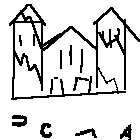 ,
which I prepared shortly after the
6.6 magnitude Northridge earthquake on 17 January 1994.
(The actual damage to Royce Hall, although extensive, was not
quite that bad.)
,
which I prepared shortly after the
6.6 magnitude Northridge earthquake on 17 January 1994.
(The actual damage to Royce Hall, although extensive, was not
quite that bad.)
 ,
other times as an actual photo
from the Ansel Adams
collection.
,
other times as an actual photo
from the Ansel Adams
collection.
On this web page, however, you get something very special, my own
rendition of Royce Hall,
 ,
which I prepared shortly after the
6.6 magnitude Northridge earthquake on 17 January 1994.
(The actual damage to Royce Hall, although extensive, was not
quite that bad.)
,
which I prepared shortly after the
6.6 magnitude Northridge earthquake on 17 January 1994.
(The actual damage to Royce Hall, although extensive, was not
quite that bad.)
But seriously, folks! One of my favorite pictures of Royce is a
photo I took myself in September of 1995. Unlike most, this
picture puts Royce in the proper perspective ...
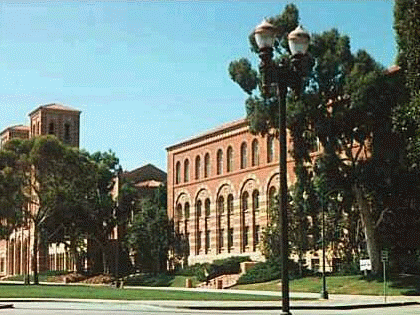
... as mere background for Haines Hall, the once and
future home of the UCLA Sociology Department.
Back to contents.
Haines Hall suffered only minor damage in the 1994 quake. Still, it wouldn't hurt to be prepared for The Big One, especially if the cost were covered with funds the federal government has already collected from taxpayers.
There is a downside, however. During seismic upgrading, beginning in January 1999, Haines Hall will be an uninhabitable construction site. The UCLA Sociology Department had to vacate the premises.
However, the UCLA Powers That Be are looking after our welfare
while Haines is being upgraded. Not wanting us to get cold or
sour, they have temporarily provided us use of Hershey
Hall:
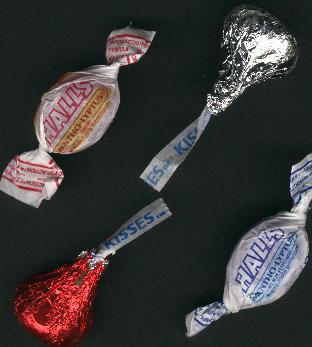 .
.
We have been promised that the Sociology Department can return to Haines Hall. In a few years. Not long after the Powers That Be who made the promise are scheduled to retire.
Back to contents.
If you are among those who expect the end of civilization as 1999 rolls into 2000, you probably are already hoarding such things as dried food, batteries, cash, and defensive weapons. But in planning for the Next Millennium, you may have overlooked the need for computational devices. These will be needed for such tasks as inventory management, as well as the more complex forms of bartering per se.
Computers you currently use may not suffice. For one thing, they have a credibility problem. Even if a computer manages to produce an answer, you have no way of knowing whether it is the correct answer or an error produced by some Y2K glitch.
Furthermore, a PC in your own bunker won't help if Y2K glitches have shut down the electric utility company. Even your battery operated notebook computer will work for only a couple hours, before it needs a recharge.
A slide rule might work, but there are two potential problems to consider. Both the prospective users and the slide rule itself are short on relevant experience:
(a) Today's young adults have never seen, let alone used, a slide rule. Computation by slide rule has become a lost art. Of course, given a remarkable recent resurgence of interest in COBOL, long thought to be a "dead language", the lack of knowledge about slide rules might not be an insuperable problem. But it is neither the only potential problem nor the most serious one.
(b) The slide rule itself has only centuries, not millennia, of experience. Slide rules are all antiques, to be sure, and the slide rule, invented around 1620, has thrice seen years ending in 99 followed by years ending in 00, and kept on calculating. But it has not yet seen years ending in 999 followed by years ending in 000. So while in theory it ought to work ok, it has never been tested in an actual change of millennia.
The best hope for a computational device to work correctly after arrival of the year 2000 is one that has already made it successfully through previous changes of millennia, namely the abacus. Some type of abacus was mentioned as early as 350 BC or so, in the writings of Aristotle.
The turnover from the first millennium BC to the first millennium AD was probably not an adequate test of Millennial Preparedness, since it passed nearly unnoticed. Most people at the time thought it was the tenth year of the reign of Caesar Augustus, or something of that sort, instead of The Year Zero K.
The year 1000, in contrast, was preceded by all kinds of cataclysmic predictions. Yet the abacus continued unaffected. Perhaps it will survive the advent of year 2000 as well.
Here, we offer David D. McFarland's design for the Abacus 2000. Regularly a $2,048 value, the Abacus 2000 will be available beginning April Fool's Day for a bargain price of only $1,999 at any fine dealers who offer it for sale.
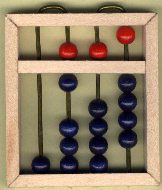
A column has up to 5 beads, one above and four below the center bar. The upper bead counts for five of the lower beads in the same column. For example, in the second column (counting from the right), the lower beads each represent 10, and the upper bead represents 50.
A number is entered and displayed by moving against the center bar those beads that are to be counted, and moving away from the center bar the beads that are to be ignored. Refer to the photo above, where the McFarland Abacus 2000 is displaying the number 654.
Subtraction is performed by moving against the center bar enough beads to represent the first number, next moving away from the center bar enough beads to represent the second number, then reading off the difference. Borrowing from the next column, where appropriate, works just as we learned in elementary school arithmetic class.
Problem 2. Subtract 8-2=? Solution: (a) Clear the McFarland Abacus 2000 by moving all the beads away from the center bar. (b) Enter 8 in the units column by moving the upper bead (which represents 5) and three of the four lower beads (each of which represents 1), against the center bar. (c) Enter the 2, which is to be subtracted, by moving two of the lower beads away from the center bar. (d) Notice that one of the remaining beads is an upper bead, and one a lower bead. Read off the answer, 6.
Problem 3. Add 1,999+1=? Solution: (a) Clear the McFarland Abacus 2000 by moving all the beads away from the center bar. (b) Enter 1,999 beginning in the right column, moving the upper bead (which represents 5) and four lower beads (each representing 1) against the center bar; and similarly for the tens, hundreds and thousands columns, until the beads represent 1,999. (c) Return to the units column and prepare to enter the 1 that is to be added. (d) Notice that there are no more beads available. (e) Swear.
You have encountered what in the latter years of the old millennium might have been called a "General Protection Fault" (or "GPF" by acronym). Other pre-2000 names for similar problems include "bug", "#$*$*@!!", "crash", and "register overflow". Those terms are computer jargon used mainly by techies, but ordinary consumers who are not techies also had names for such, including "planned obsolescence" and "@*$x*!*?%!*$x*!*".
...
For cutting-edge computational capabilities even more powerful
than those in the McFarland Abacus 2000, we recommend
the McFarland Abacus 2001, soon to be
released. The price will be $2049, but registered users of the
McFarland Abacus 2000 will be able to upgrade their current
models for only half price, $1024.50, by purchasing and
installing the Upgrade Kit 2001 pictured below.
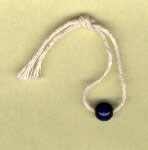
"Computing for the Previous Millennium ... And Beyond". That is our motto!
Back to contents.